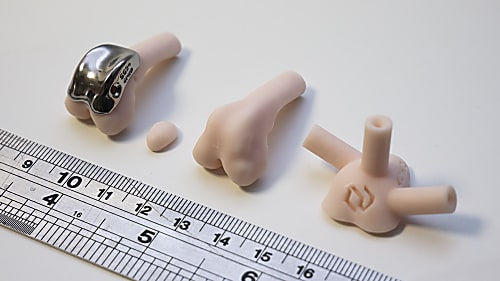The TROCA 55 trochlear cap system - Customised trochlear cap by LimesVet
One of the most frequent orthopaedic deformation in small dogs is the dislocation of the patella. Patellar luxation is often a congenital, inherited disorder but it can also be caused by a trauma or an accident. With the help of 3D design and printing, we have created an implant which is considered exceptional worldwide. It is uniquely designed and manufactured for the femur of the given animal. We deliver this product together with anatomical models and surgical drilling guides.








